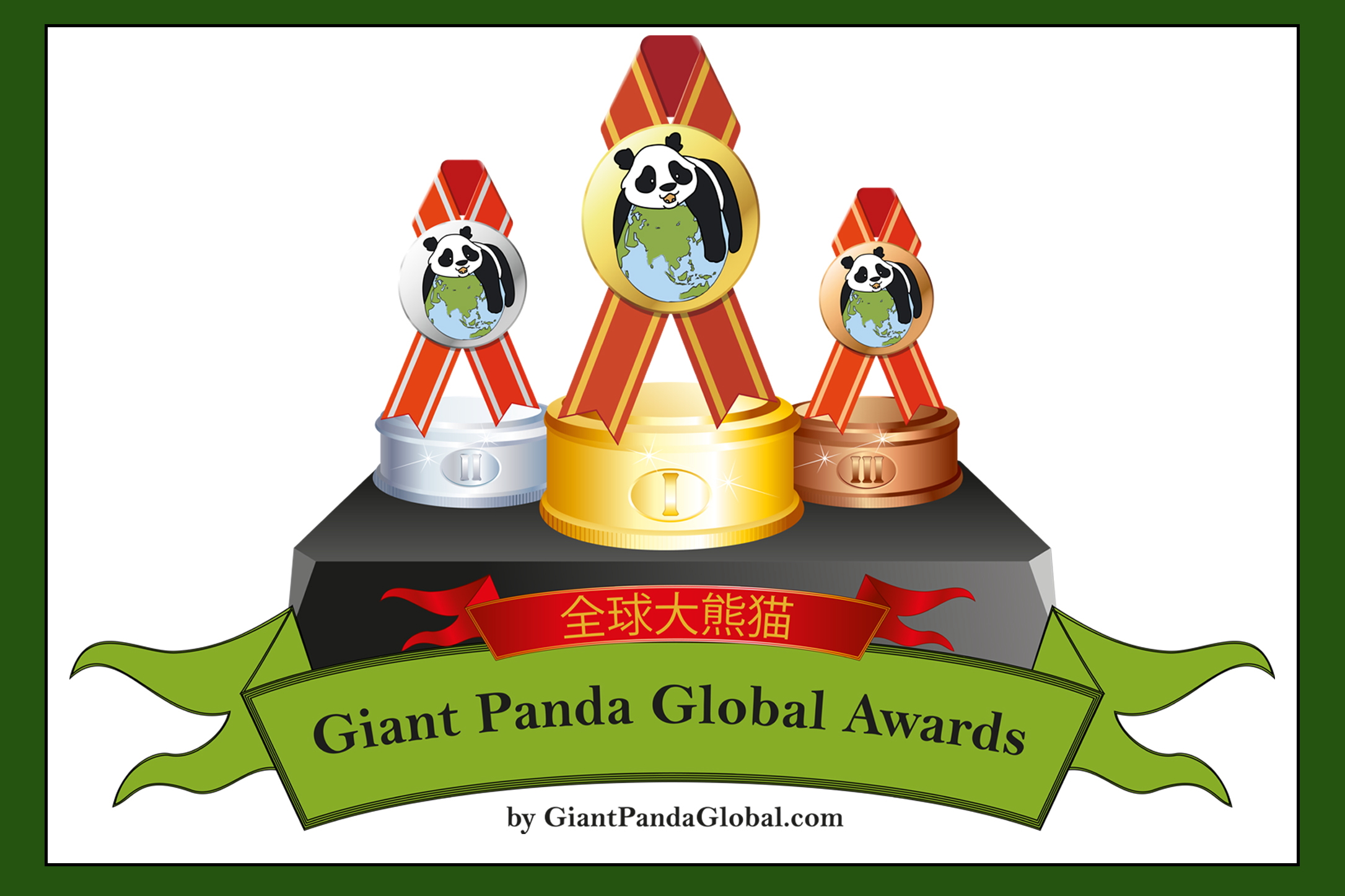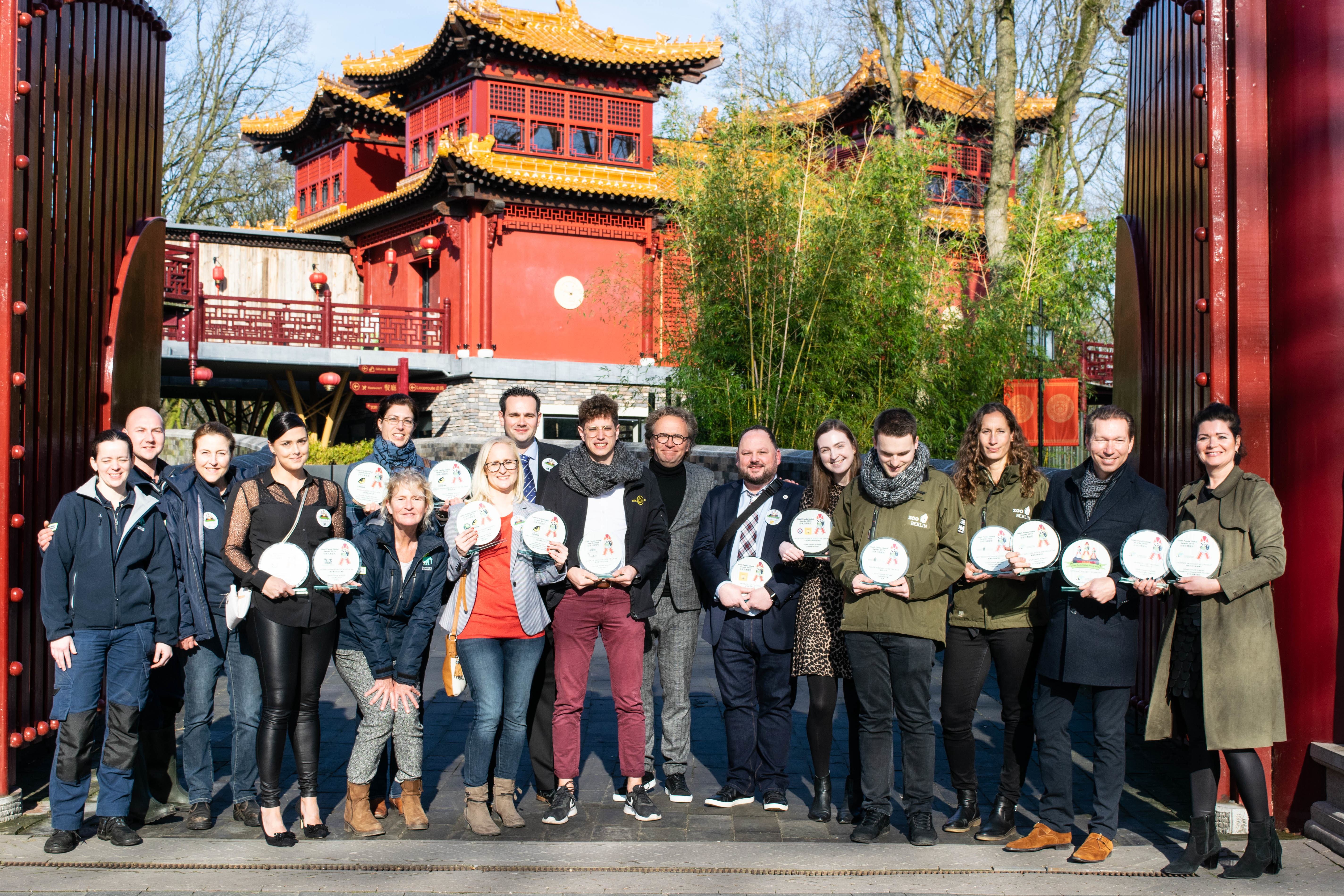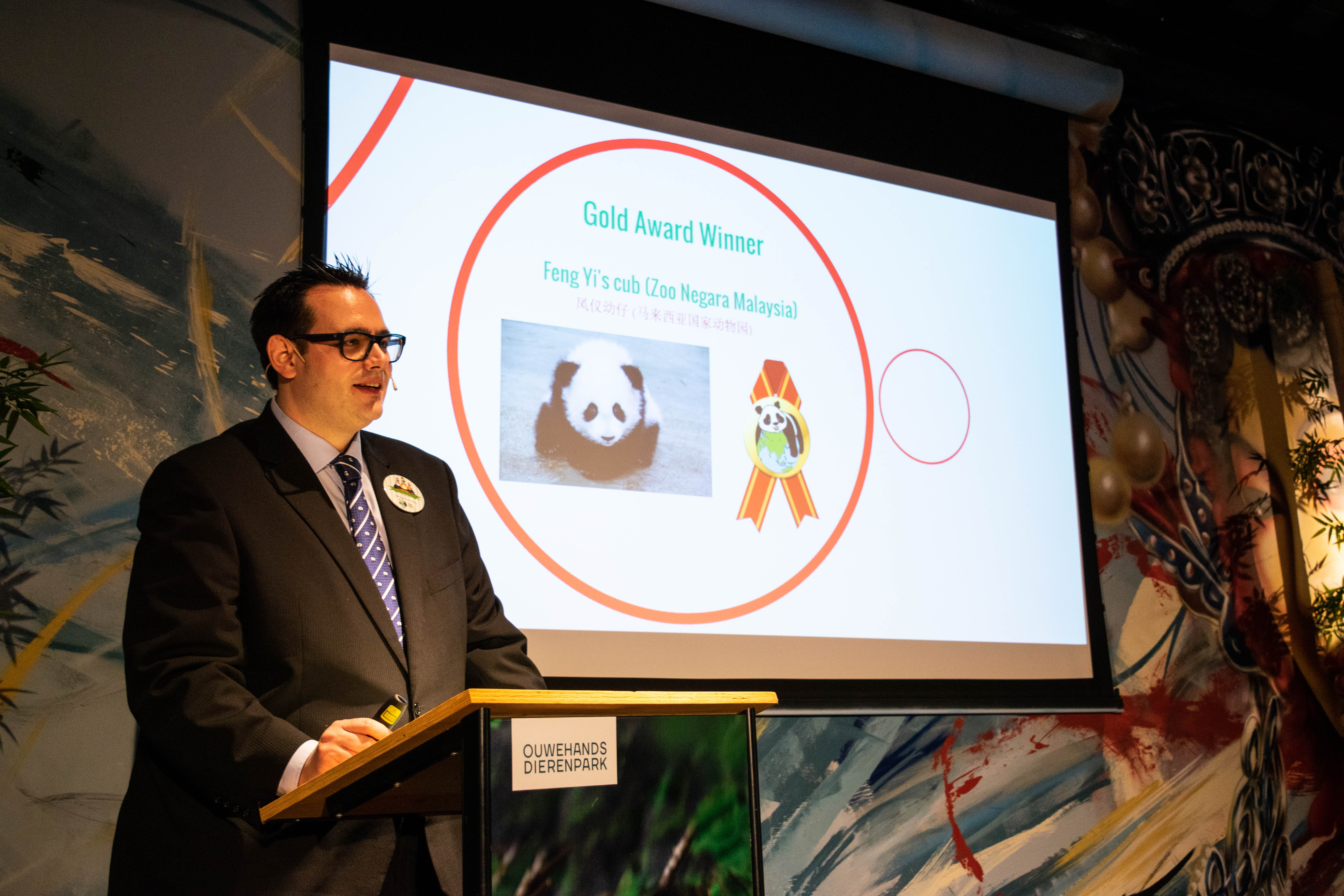Jonathan Ballou & Kathy Traylor-Holzer receive Lifetime Achievement Award
‘Panda Matchmakers’ Jonathan Ballou (Smithsonian Conservation Biology Institute) & Kathy Traylor-Holzer (IUCN SSC Conservation Breeding Specialist Group) received the Lifetime Achievement Award of the Giant Panda Zoo Awards 2013.
Ballou & Traylor-Holzer are two of the worlds experts on genetic management, their advice and work has been keen to the the successfull captive breeding program of the giant panda.
Playing Panda Matchmaker
Baby giant panda cubs – adorable fuzzy balls of black and white fur. Zoo visitors flock to catch a glimpse of these rarely seen tiny animal ‘stars’. But when Jon Ballou (from the Smithsonian Conservation Biology Institute) and Kathy Traylor-Holzer (from the IUCN SSC Conservation Breeding Specialist Group) see panda cubs, they see them as a different kind of ‘star’. These cubs represent the future of giant pandas – future breeders that carry the genes of their wild-born ancestors needed to produce strong, healthy zoo populations and to support wild panda conservation. Dozens of questions come to their minds about each cub: Who is its mother and its father? Is it a single cub, or part of a set of twins or even rare triplets? Was it conceived by natural mating or artificial insemination? And what role will it play in the larger picture of giant panda conservation?
Zoo animal populations can play significant roles in wildlife conservation, from increasing public awareness and conservation support and providing research opportunities, to serving as a source for reintroduction efforts and as an ‘insurance policy’ against extinction. To be effective, however, zoo populations must be well managed to keep them genetically healthy and to minimize domestication – their adaptation to the captive environment. They also need to reproduce well to grow and maintain a large population.
Giant pandas have gotten a lot of bad press about how poorly they breed. Much of this was true a decade ago. Today, however, zoo panda populations are growing quickly, averaging about 10% growth each year. This success is the result of enormous efforts and commitment by Chinese and international colleagues working to improve husbandry, veterinary care, nutrition, and reproductive techniques. A major turning point was the formation of the Chinese Committee of Breeding Techniques for Giant Pandas in 2002, which meets annually to discuss challenges, goals, and, most importantly, develop a breeding plan for the next year for giant pandas in zoos around the world.
Enter the Panda Matchmakers – Kathy and Jon. Fortunate enough to be there in 2002 when it all began, these population biologists have been advising the Committee each year during its masterplanning session to develop breeding recommendations. First task – update the studbook data detailing information on the birth, death, and important events in between, for each giant panda in the world’s zoos. International studbook keeper Xie Zhong (from the Chinese Association of Zoological Gardens) is a data wizard, and soon passes the critical information to Jon and Kathy for detailed analyses. Next step – the Committee identifies goals for the population. How many pandas are needed for a healthy population, how fast should the population grow, and which pandas should breed and with whom? Jon and Kathy provide guidance using the PMx software program to advise on what is feasible and what is necessary to keep the population healthy and meet its conservation goals.
Finally, the real work begins. Which giant pandas are the genetic ‘hot shots’ and are priority breeders in the annual panda dating game? Results of the studbook data analysis guides the way by assigning each panda a relative genetic value in the population, using a score called ‘mean kinship’ (MK) developed by Jon and used for most species in zoos around the world. A small MK score means that the panda has few relatives and is carrying a rare genetic line – a priority breeder! Pandas with large MK scores are not so lucky, although in some cases their offspring also may be valuable to the giant panda program and they too may be recommended to breed.
The Committee studies the data, examining each female, assessing her genetic value, and selecting several males as good potential ‘matches’ for the next breeding season. Every effort is made to avoid selecting males that are related to the female, as inbreeding will likely produce unhealthy cubs and is detrimental to the population. Another score is calculated—this time it is a Mate Suitability Index for each potential pair that combines genetic value and inbreeding considerations. Low MSI scores indicate good ‘matches’. Identifying multiple options for male mates is important, as some males are better breeders than others; artificial insemination is also an option to pass on a valuable male’s genes if all else fails. Genetic factors are important, but other factors such as health, age, temperament, and location are considered as well. Female by female, institution by institution, the matchmaking continues using the computer analysis as a guide. At the end of a long session of ‘computer dating’ there emerges a blueprint for the next year’s breeding season.
The best part is that it is working and the captive giant panda population is thriving! Since the cooperative program began in 2002, the global zoo population has increased from 152 to 375 pandas now living in 72 institutions, gene diversity has increased to 97.4%, and most (92%) of the captive population is captive born. Strong genetic management is keeping gene diversity high and inbreeding very low and is minimizing any genetic changes resulting from captivity. The long-term goal is to retain 90% of the giant panda population’s gene diversity for 200 years, an ambitious goal that will require a total captive population of about 500 pandas. The global giant panda population is one of the most viable and healthy populations in captivity, and should be able to meet this goal as well as provide animals for release to support the wild panda population.
Although Jon and Kathy were recognized in this year’s Giant Panda Zoo Awards, they are quick to say that theirs is but a small role compared to the work of the global giant panda zoo and conservation community. This amazing and effective program is the result of immense effort and collaboration of zoo staff, nature reserve staff, researchers, China’s State Forestry Administration, the Chinese Association of Zoological Gardens, and many other devoted colleagues both in China and around the world. “We feel honored to have been part of this success story for giant pandas, and to work with the wonderful and highly skilled biologists of China to assist them in their efforts to protect this very special species.” Is it any wonder that they look forward to each November for another chance to play Panda Matchmakers? It’s a dream job come true.









